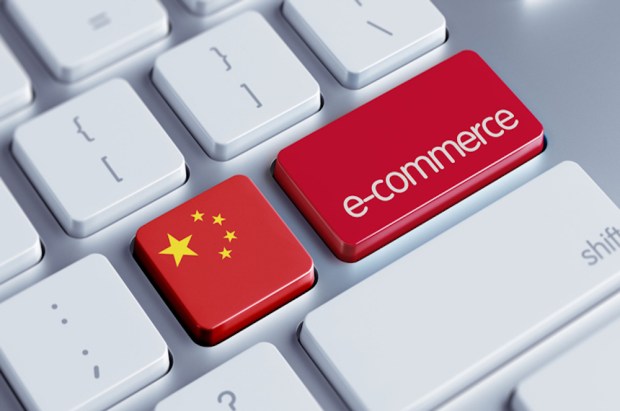The Chinese Consumer On The International Commerce Stage

In late July, PayPal and Baidu captured the world’s attention when they inked a strategic partnership that gives Baidu’s 100 million or so mobile wallet users access to PayPal’s 17 million merchants.
On its face, the deal has plenty of upside for both firms.
PayPal has spent much of the last year creating partnerships with many of the world’s more luminary players in the payments and commerce space — Apple, Samsung, Visa, Mastercard, Chase and Android are the abbreviated version of that list — as it executes on its post-IPO mission to build the global operating system for digital commerce. PayPal also inked extended agreements with Citi and Chase, added instant bank transfers and made it easier for its merchants to sell worldwide.
Baidu, on the other hand, is taking a shot at making up some of the ground that separates it from China’s dominant mobile payments players, Alibaba’s Alipay and Tencent’s WeChat Pay. And, given that Alipay has 500 million users and WeChat Pay has about 600 million users, well they have a lot of ground to make up, and Baidu’s 17 million new international merchants are a good place to start.
In fact, given new data released this week by PayPal, when it comes to meeting the needs of young, urban Chinese digital shoppers, 17 million new merchants might actually qualify as a great start.
As much as Chinese consumers rather enjoy their local digital commerce experiences (a fact Alibaba’s staggering growth during Q2 surely attests to), they are also eager to strike out globally and buy direct from merchants worldwide.
“The survey results showed the huge demand and consumption capability of Chinese consumers in the field of direct overseas online purchases, as well as the significant impact of payments on consumer behavior,” noted Jason Li, PayPal strategy and business development director of greater China.
So how often do Chinese consumers buy abroad, what do they buy – and what still needs work?
Why Shop Overseas?
Cross-border commerce is on the rise in China, according to PayPal’s 2017 China Overseas Online Consumption Behavior Report, as Chinese customers are moving more toward buying directly from foreign merchants and marketplaces.
Surveying shopping in China’s five largest cities, researchers found that the majority of Chinese consumers prefer buying direct when given a chance and will even pay a bit more for the chance to do so. The average transaction size on an overseas site is roughly RMB1200 (about $180), edging out the $160 average on domestic sites.
Consumers who shop overseas now narrowly outnumber those that do not. According to respondents, 51 percent had shopped on a foreign site or marketplace in the last year, compared with the 49 percent who had only shopped digitally domestically.
The most avid digital shoppers in China? Young married people with children.
And those young families, once they start shopping online, will likely continue. The survey also showed that consumers will likely shop six times with an overseas merchant in a year and spend a bit more every time they go than they would have had they shopped domestically.
What is driving these customers into the arms of cross-border commerce?
Quality first and foremost, as it turns out Chinese customers don’t much like buying counterfeit goods either, and counterfeiting is a well-known and endemic problem on many of China’s eCommerce platforms ::cough:: Alibaba :: cough::.
Among survey respondents, 66 percent noted that “good quality” was their main driver, while 65 percent noted “guaranteed authenticity” as the main reasons they chose to make online purchases on overseas merchants/marketplaces. Additionally, 55 percent noted that foreign merchants/marketplaces offered a richer assortment and variety of goods.
What Draws Spend
In perhaps unsurprising news – the U.S., U.K. and Japan are favorite destinations for Chinese consumers. That makes sense since those three nations tend in general to be popular with overseas shoppers from all nations.
But perhaps a bit more surprising is how strong a preference for U.S.-based eCommerce Chinese consumers have. According to PayPal’s survey results, 89 percent of survey customers shopped via American digital channels last year, as opposed to 46 percent who bought in the U.K. and 42 percent who shopped in Japan.
As for why they shopped?
Need was a leading reason; 86 percent reported only shopping overseas in accordance with a specific need. Holiday shopping and promotions also were found to be particularly motivating. As for what they are buying, accessories are the most favorite category, as 83 percent of respondents reported their purchase, followed by clothing (63 percent) and food and health products (57 percent).
What Needs Work
The main troubles reported by consumers were transportation logistics and security of payments, particularly when compared with domestic opportunities.
Transport logistics and payment security are the main problems for direct overseas purchases, with 40 percent of users complaining that delivery times were notably longer than their domestic counterparts. In a related note, shipping costs were widely considered to be too high, particularly when paired with the fact that a third of consumers also found overseas delivery logistics too confusing and hard to use – and particularly difficult to deal with when it comes to returns.
Among those who have never bought anything overseas, the big limiter doesn’t seem to be transportation logistics, however, but payment security, with 39 percent reporting that it was the biggest obstacle for them even attempting it.
